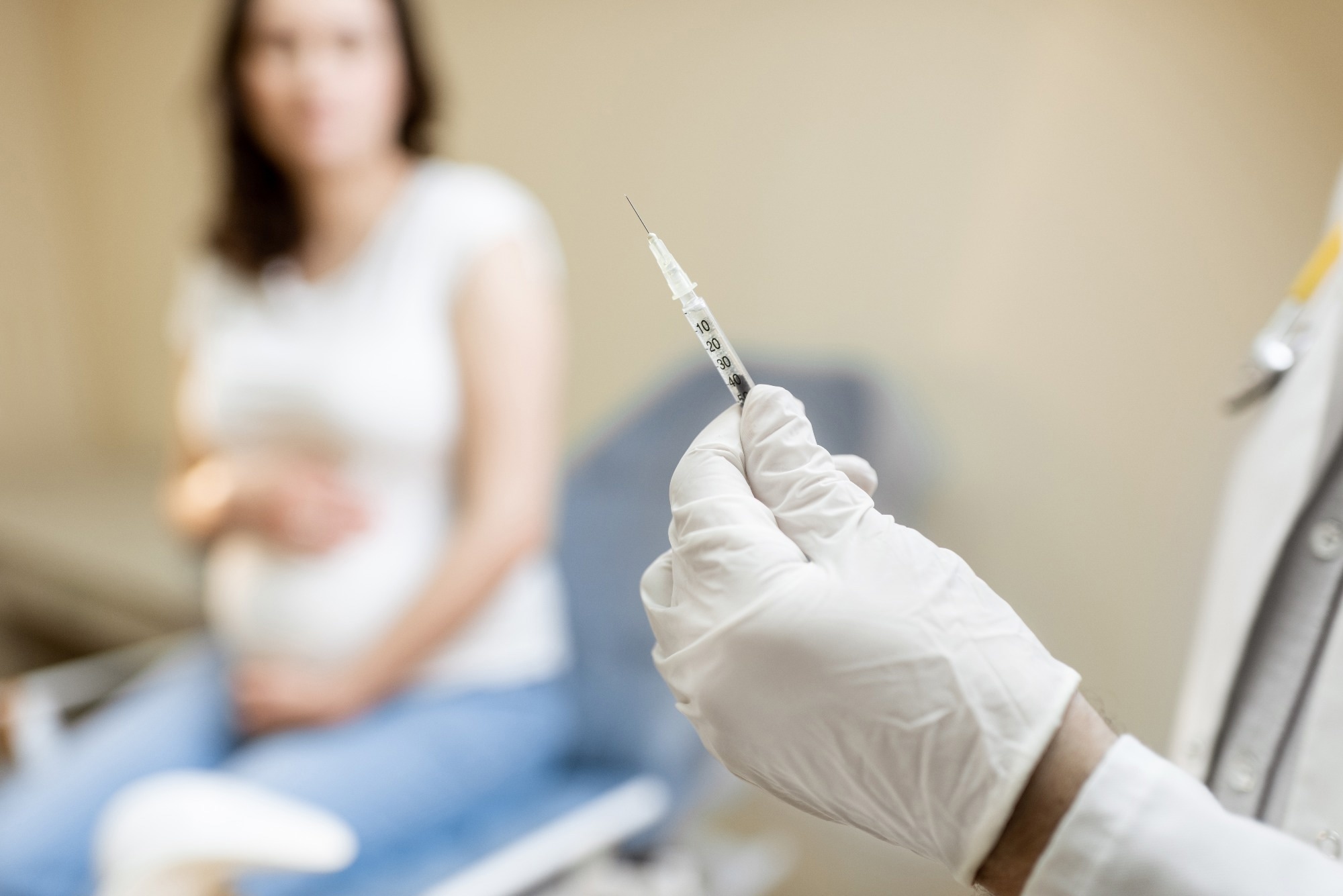In a recent study published in The Journal of Infectious Diseases, researchers compared two methods of half-life estimation to evaluate the half-life of maternal antibodies present in infants against pertussis induced by tetanus, diphtheria, acellular pertussis (Tdap) vaccine administered to mothers during pregnancy.
 Study: Half-life estimation of pertussis-specific maternal antibodies in (pre)term infants after in-pregnancy tetanus, diphtheria, acellular pertussis vaccination. Image Credit: RossHelen/Shutterstock.com
Study: Half-life estimation of pertussis-specific maternal antibodies in (pre)term infants after in-pregnancy tetanus, diphtheria, acellular pertussis vaccination. Image Credit: RossHelen/Shutterstock.com
Background
Whooping cough or pertussis is a bacterial respiratory disease caused by Bordetella pertussis. The infection is highly contagious, and the World Health Organization (WHO) estimates from 2018 reported over 150,000 cases of pertussis globally.
However, these estimates are believed to be an underestimation, and studies show that the true burden of pertussis in infants is close to five million, with close to 86,000 deaths among infants below the age of one.
In many countries, the Tdap vaccine has been introduced as an immunization option during the pregnancy for mothers to increase the placental transfer of maternal antibodies against B. pertussis from mother to fetus, to improve the infant's immunity against pertussis in the early weeks of life.
However, the generation of antibodies in the infant can be affected by the maternal antibodies present in the infant, which makes it essential to understand the half-life of pertussis-specific maternal antibodies.
The vaccination regimen for the infant can then be decided based on how long the maternal antibodies persist in the infant's immune system.
About the study
In the present study, the researchers used data from two prospective cohorts to compare two half-life estimation approaches and determine the covariates that significantly impact the estimation of antibody half-lives. Potential dilution effects were also corrected by using weight gain in infants as a surrogate measure for increases in blood volume.
The two prospective cohorts were from studies conducted in Belgium and Thailand that investigated the half-life of maternal antibodies against pertussis in infants.
Furthermore, while both studies included pregnant women who had been administered the Tdap vaccine between six and eight months of gestational age, the Belgian cohort included both pre-term and term infants, while the Thai cohort only included infants born after eight months of gestation.
The Thai study measured the titers of immunoglobulin G (IgG) antibodies against pertactin, filamentous hemagglutinin, and pertussis toxin using commercial enzyme-linked immunosorbent assay (ELISA) kits with the lower limit of detection (LLOD) being less than five IU/mL (international units per milliliter). The Belgian study used an electrochemiluminescent method developed in-house with an LLOD less than 2 EU/mL (Elisa Units per milliliter) to measure the antibody titers against the same three antigens.
The measurements for the infants were included in the analysis only if measurements of antibody titers were available from birth (cord blood). Before the primary vaccination, a minimum of one measurement above the specified LLOD was available, and if the measurements indicated decay, the antibody titers before the primary vaccination were lower than the cord blood antibody titers.
Two approaches — direct and indirect — were used to estimate the half-life of the antibodies against each of the three antigens. The direct method assumed a constant decay rate, while the indirect method used a linear mixed-effect model to estimate the decay rate.
Results
The results indicated that both the half-life estimation methods provided similar results, with some covariates explaining the half-life estimate differences between the two approaches.
The inclusion of pre-term infants provided the strongest evidence for the difference, with the samples from pre-term infants having the highest half-life, which indicated that the half-life of the antibodies decreases with the increased duration between maternal vaccination and the delivery of the infant.
The half-life estimates also differed between the antibodies against the three pertussis-specific antibodies.
Furthermore, the observation that the antibody titers in pre-term infants had a higher half-life and a lower decay rate was independent of other variables, such as the choice of the model for half-life estimation or the maternal antibody levels.
An increase in infant weight was also correlated with an increase in the rate of decay of maternal antibodies, indicating a dilution effect. Half-life was also found to decrease if the infant was not breastfed or was the firstborn, the former observation indicating the potential transfer of antibodies through breast milk.
Conclusions
Overall, the findings indicated that the two approaches to estimating the half-life of the maternal antibodies in infants against pertussis antigens reported similar results.
However, the results from the cohort that included pre-term infants showed that the antibodies in pre-term infants had a longer half-life and a slower rate of decay compared to those in term infants. Longer gestation duration and higher volume of antibodies in the infant at birth were associated with a shorter half-life.